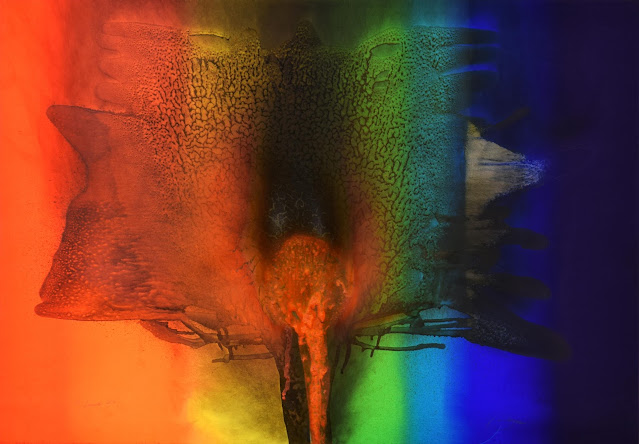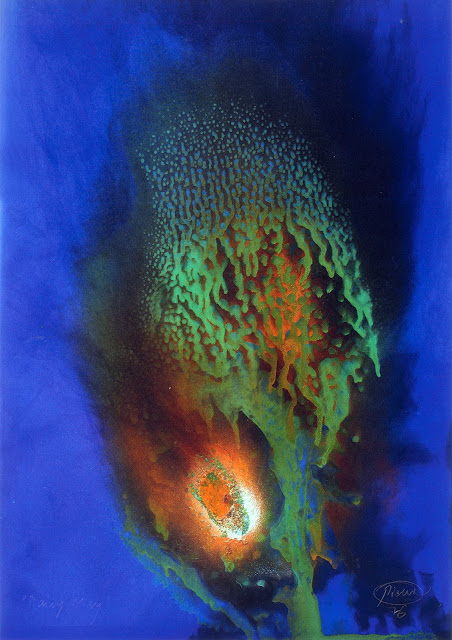German artist specializing in kinetic and technology-based art, often working collaboratively. He lived and worked in Düsseldorf, Germany; Cambridge, Massachusetts; and Groton, Massachusetts.
"Otto Piene ( 1928 -2014 ) studied at the Academy of Art in Munich and later during the late 1950s at the Kunstakademie Düsseldorf where he met Heinz Mack and co-formed the highly influential Group Zero in 1957, latterly joined by Gunther Uecker. ZERO, in contrast to Abstract Expressionism, emphasized art void of colour, emotion, and individual expression.
Piene was highly experimental and motivated by non-traditional art materials and techniques. Best known for his paintings made with smoke and fire (Rauchbilder), Piene applied solvent to pigmented paper and lit it on fire, developing organic images in the residual soot. The “raster” (grid) paintings of stencilled paint, also cast in ceramic, inspired The Light Ballet; a series of sculptural installations in which light was projected from moving globes and brass columns through grids allowing the light to ‘dance’ on the wall.
His technological exploration into light continued with holograms, lasers and strobing, and Piene become the first fellow of the MIT Center for Advanced Visual Studies in 1968. Piene went on to serve as the director of the MIT Center for Advanced Visual Studies from 1974 to 1993. His works can be found in numerous museum collections around the world, including The Museum of Modern Art in New York, the Walker Art Center in Minneapolis, the National Museum of Modern Art in Tokyo, the Stedelijk Museum in Amsterdam, and the Centre Georges Pompidou in Paris. In 2014, the Guggenheim Museum in New York opened a large-scale historical survey of the work of the ZERO group."(mayorgallery.com)




























































